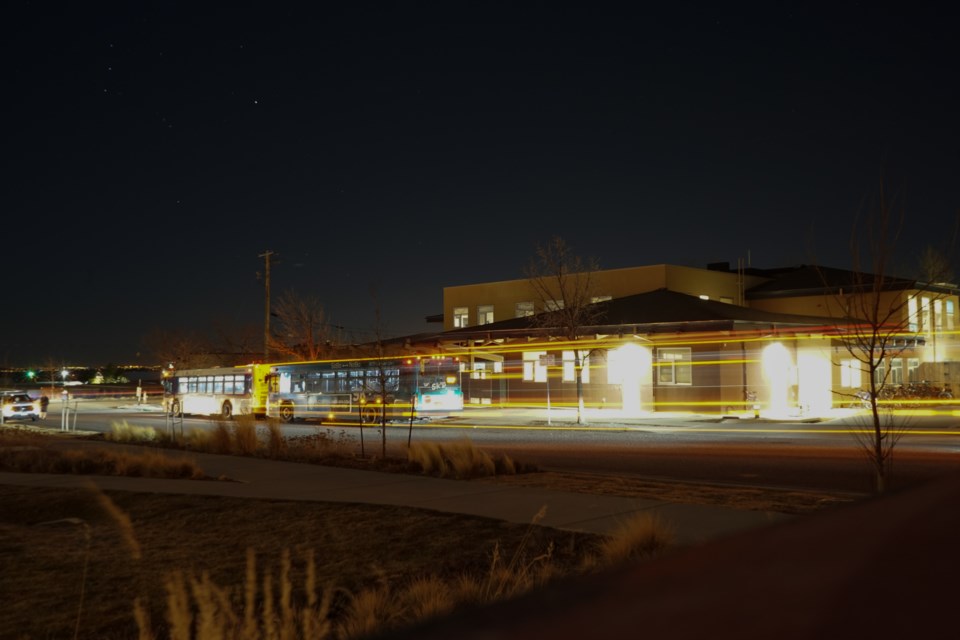Editor’s note: This story was originally published by Boulder Reporting Lab and was shared via AP StoryShare.
Last Thursday, shortly after 7 p.m., eight people who had shown up to the shelter in North Boulder in search of a place to sleep were turned away at the door.
Staff at the Boulder Shelter for the Homeless said the shelter was at capacity. As temperatures dipped below freezing, they offered a blanket and bus pass to each person denied entry.
“I’ve been doing this a long time. So I know what it’s like,” said Ryan Jauch as he walked away toward a nearby hotel.
Jauch and others traveled about three miles from downtown to the city’s northern edge, where the shelter is located, before grabbing a lottery ticket to determine who gets inside. Dozens of people waited hours outside for their name to be called.
“They try to make it as fair as possible, but sometimes people are left outside looking in,” said Michael Hefner, whose name wasn’t called.
In the last week, the city’s largest shelter has turned away more people due to capacity than in all of last winter. According to city data, three people were denied entry last winter due to capacity. This year, before the official start of winter season, that number approached two dozen.
The Boulder Shelter for the Homeless, a nonprofit organization operating the city’s only night shelter open to everyone, currently sleeps 140 people. Other shelters in the city serve youth and people who identify as women, transgender or nonbinary.
Capacity and demand
Overall, the total shelter capacity in the city is lower than prior winters. In May 2020, Homeless Solutions for Boulder County, a board overseeing the county’s homelessness program, trimmed 72 emergency shelter beds from the system when it closed the 30th Street shelter.
That same year, the county health department mandated that the Boulder Shelter for the Homeless cut its capacity by 20 beds to increase social distancing as a Covid-19 precaution. To maintain capacity, the shelter now accommodates up to 20 more people in hotels. On “critical” weather nights, when temperatures fall below 10 degrees Fahrenheit or snowfall tops six inches, it may shelter another 20 people in hotels.
Demand for shelter also likely increased this year after the Homeless Solutions board opened the shelter to non-residents of Boulder County in response to allegations of discrimination by the American Civil Liberties Union. Meanwhile, the Boulder City Council this summer enacted an ordinance prohibiting propane tanks in public spaces as part of its camping ban.
The total official turnaways in 2021 doesn’t include the people who turned back voluntarily after traveling to the shelter and learning it was full.
In addition to capacity turnaways, city data indicates 101 people have been denied entry this year because they didn’t follow the shelter’s rules for coordinated entry, a system used by the county to obtain housing vouchers for residents. In some cases, people are turned away for not calling the shelter to complete a questionnaire in advance of showing up for the lottery.
City considers adding more beds
Officials who oversee the shelter and the city’s response to homelessness have not yet proposed immediate plans to address the turnaways.
Kurt Firnhaber, the city’s director of Housing and Human Services and board member of Homeless Solutions for Boulder County, said the city and the shelter are considering adding five additional hotel beds in January, and another five in March. Firnhaber said this is dependent on the capacity of shelter staff.
He also said adding more beds to the system won’t necessarily decrease the number of people turned away. The city’s shelters turned away dozens of people during the 2019-2020 winter season, when its bed capacity included the 30th Street shelter. One reason, according to Firnhaber, is that the number of new people who come to Boulder and use its homelessness services can vary from day to day.
“Creating a system that can shelter a fluctuating number of individuals is very challenging,” he told the Boulder Reporting Lab in an email.
Firnhaber said the city’s housing-first policy, which was implemented in 2017, has resulted in a “dramatic decrease” in capacity turnaways. County data indicates the program has resulted in more than 1,100 homeless “exits.” About half of those exits include people who were either sent off to live with friends or family, or were referred to behavioral health services or work programs and are not tracked by the county to ensure they’re housed.
Spencer Downing, the interim executive director of the Boulder Shelter for the Homeless, agreed adding more beds is unlikely to reduce the number of turnaways.
“Housing is what actually gets people off the street, not more shelter beds,” Downing said.
He said his shelter staff are already strained filling beds each night and trying to get people housing vouchers. Some staff, he said, are already working nearly 60 hours per week. They may not have the capacity to oversee the additional hotel beds, he said.
“Our problem right now is attracting and maintaining staff,” Downing he said.
On Tuesday, Firnhaber and Downing attended a memorial in downtown Boulder to honor 30 people who died this year after experiencing homelessness. In 2020, 29 unhoused people died, according to a county coroner report.
It’s unclear whether the people who died were ever denied shelter. The shelter, the city and the county do not release the names of people in the shelter or those denied access. But it’s a fear on the minds of many waiting for a spot inside.
“If you try to seek shelter, and you’re denied, you’re vulnerable to death,” Reginald Snelling said during last Thursday’s lottery, before his name was called.



